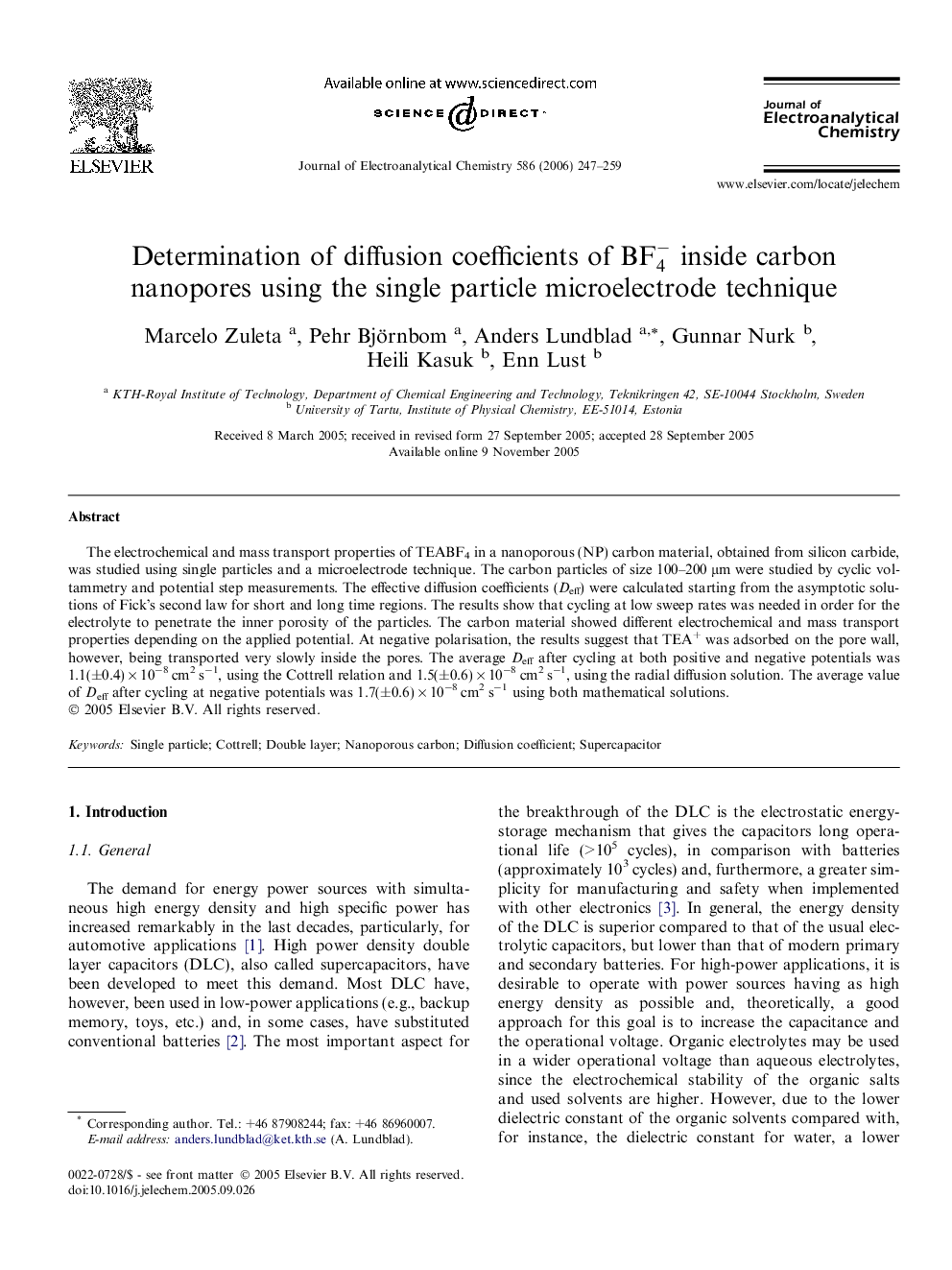| کد مقاله | کد نشریه | سال انتشار | مقاله انگلیسی | نسخه تمام متن |
|---|---|---|---|---|
| 221514 | 463403 | 2006 | 13 صفحه PDF | دانلود رایگان |

The electrochemical and mass transport properties of TEABF4 in a nanoporous (NP) carbon material, obtained from silicon carbide, was studied using single particles and a microelectrode technique. The carbon particles of size 100–200 μm were studied by cyclic voltammetry and potential step measurements. The effective diffusion coefficients (Deff) were calculated starting from the asymptotic solutions of Fick’s second law for short and long time regions. The results show that cycling at low sweep rates was needed in order for the electrolyte to penetrate the inner porosity of the particles. The carbon material showed different electrochemical and mass transport properties depending on the applied potential. At negative polarisation, the results suggest that TEA+ was adsorbed on the pore wall, however, being transported very slowly inside the pores. The average Deff after cycling at both positive and negative potentials was 1.1(±0.4) × 10−8 cm2 s−1, using the Cottrell relation and 1.5(±0.6) × 10−8 cm2 s−1, using the radial diffusion solution. The average value of Deff after cycling at negative potentials was 1.7(±0.6) × 10−8 cm2 s−1 using both mathematical solutions.
Journal: Journal of Electroanalytical Chemistry - Volume 586, Issue 2, 15 January 2006, Pages 247–259